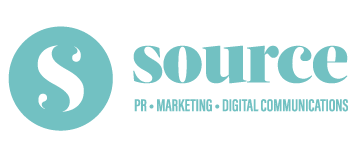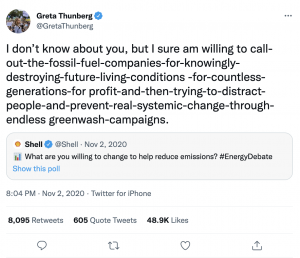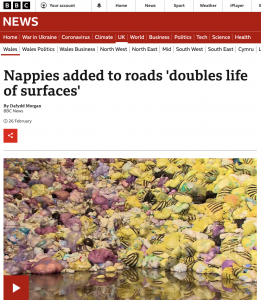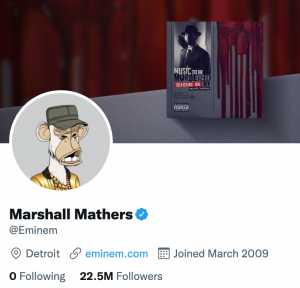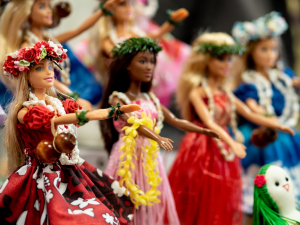As we look ahead into 2022, the team at Source PR shares below how they feel the pandemic has changed the way brands interact with customers and what PR and communication trends we’re likely to see as we head into 2022.
The pandemic has accelerated the changes in PR that have been coming over the past decade. The move from more traditional ‘siloed’ communications towards a more holistic and integrated approach is complete. For example, pure media relations can’t exist without reflective web content or supportive social media management – each communications silo needs to integrate and relate.
This has naturally led to a blurring of lines between PR, marketing and advertising, digital and offline – essentially requiring PR and marketing teams to develop plans that reflect an integrated approach to communications.
-
Complete the shift to digital-first
The pandemic has ushered in a more digital world meaning companies should be looking at new ways of getting in front of their audiences and ‘meeting’ them in new ways.
In 2022, traditional PR strategies won’t work as well and companies need to adopt a digital-first strategy. Marketers should however remember that although the platform is online that they’re targeting real people. We thrive on being liked, making conversation, and having meaningful interactions that we can relate to.
As we’re all individuals, this means that when it comes to engaging with customers, brands need to understand that a one-size-fits-all approach doesn’t work. Customers care more now than ever about their experience with the companies they are buying from and don’t want to be bombarded with generic emails or social communications that just aren’t relevant to them.
Always remember that consumers are more likely to buy from a brand that they trust, have a relationship and can relate to.
-
Engage with, or become an influencer
It’s hard not to be aware of the growing influence of the influencer. But what is an ‘influencer’? In short, it’s someone with a strong following who ‘creates unique content that reaches and engages people within a specific target audience’. When chosen correctly, they can add credibility, authenticity, and personality to campaigns, providing they are harnessed in the right way.
PR agencies are well placed to work with companies and brands to shape and foster a community of advocates and influencers. Influencers can also help humanise the brand in addition to boosting appeal and trust, promoting products and services to new cohorts, providing invaluable user-generated content (UGC), word-of-mouth recommendations and social media chatter.
When considering an influencer be sure to undertake the due diligence and to create genuine partnerships that have strategic alignment with brand values. As ever, key performance indicators (KPIs) will play a crucial role in demonstrating whether the return on investment (ROI) is beneficial.
If you’re a business leader with proven experience in a sector, what’s to stop you from developing your own profile as a thought leader in the sector? 2022 could be the year for this and we are looking forward to working with our clients to achieve this ambition for them.
Finally, although we live in the digital age, brands need to be backed up by real people, otherwise, they risk becoming faceless. Analysis of the social media platforms we manage clearly show that consumers want to experience the human touch and to understand the people behind the brands.
-
Develop a social conscience
There is also greater pressure coming from consumer organisations and the public to ensure the products we are consuming have been delivered in a sustainable way, haven’t unnecessarily damaged the environment or caused distress to people or the planet.
If companies are doing good work, it’s important to share the news or at least give a vision for the future that stakeholders can buy into or be part of. In short, communicating with a conscience has never been more crucial.
We are however still at the stage where companies are positively viewed for their good works, however, in 2022 it’s likely that there will be a shift towards the greater expectation that a company is doing the right thing. Not acting or doing the ‘wrong thing’ therefore poses a risk to an organisation’s reputation, which can quickly spiral out of control in a digital world.
Be careful not to virtue signal or publish ‘green guff’ as the public are getting increasingly savvy and there is a risk it could backfire. If you keep your actions aligned to your vision, values and core principles you can’t go far wrong and always keep the communities you are looking to influence in the forefront of your mind when selecting a campaign to support.
2022 will be all about developing a PR narrative that allows clients to demonstrate their credentials in a meaningful way. When done well, community-led storytelling is more acceptable and authentic than direct brand-led communication, but this community advocacy needs to be consciously harnessed and not left to chance.
-
Create the right content
As we continue to embrace the digital era, social and web channels are only going to gain more momentum and be an increasingly critical communication tool. In the coming year, ensure that the content provided is authentic and relevant to your audience’s interests.
There has already been a monumental rise of short-form video this year, but more companies will use the format for sales and information, not just entertainment. Of course, the sales messages conveyed via video will have to be entertaining and engaging to capture and hold the viewer’s attention.
The power of speech as a search tool will continue in 2022. Already nearly a third (29%) of people in Britain now own a smart speaker and Forrester predicts the number of households with smart speakers in the EU will reach 57.5 million by 2024. When creating content consider speech search terms as well as those typically typed into Google as increasingly consumers will rely on voice to search for their favourite product or to request information.
-
Manage your messages
As we develop a multi-channel PR and communications strategy, communications professionals should not be lazy but adapt their messages to suit the platform. Whether LinkedIn, Twitter or TikTok adapt the message and content to suit. As new platforms develop, they also become more mainstream so don’t write off Snapchat and TikTok as only being relevant to younger generations. More and more Millennials and other older generations are becoming active there.
The final point to make is to ensure your messages are adapted for various audiences. Although much of the above relates to acquiring new customers, don’t forget that “a bird in the hand is worth two in the bush” and that retaining customers that are already engaged should be an equal focus for companies and brands in their PR and communications.
We’d love to know your thoughts on what you feel are the topics and trends for 2022? Whether you agree or disagree with the above, I’m sure we can all agree that the only real risk is to those who choose to do nothing. We’d happily meet to discuss or support your plans in 2022 and always love to hear or share ideas – you can contact us here.
Whatever you choose to do – we wish you the best of luck and hope you have a happy, healthy and prosperous 2022.
Photo by Djordje Vezilic from Pexels
